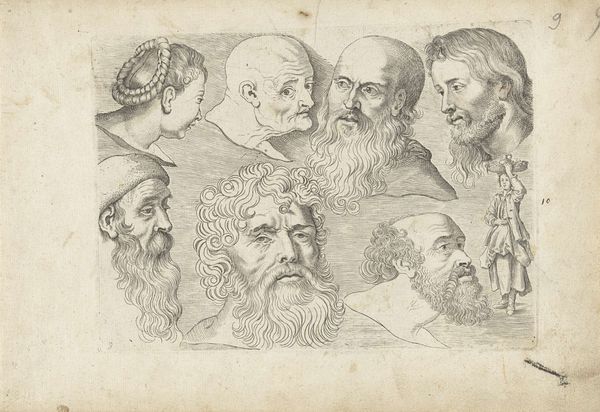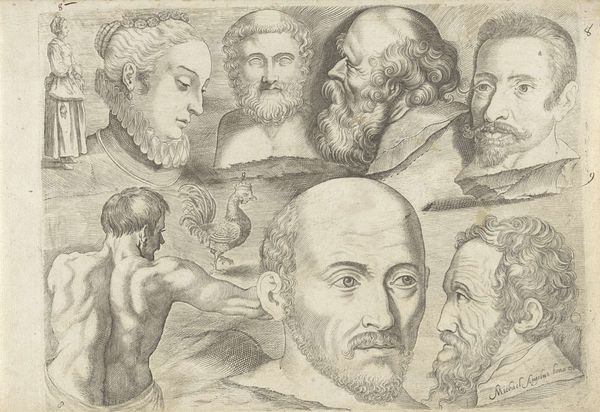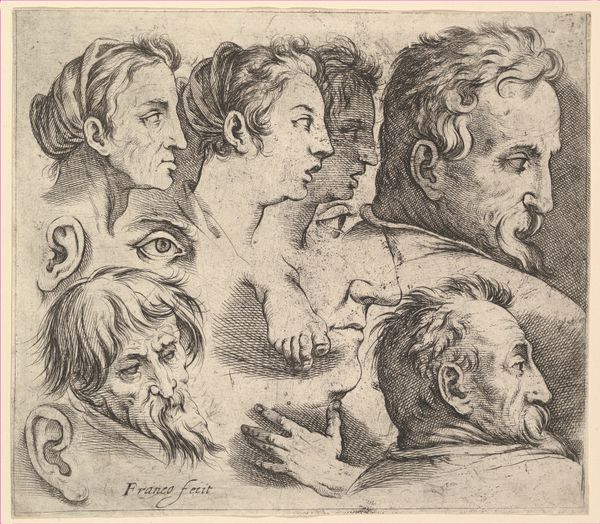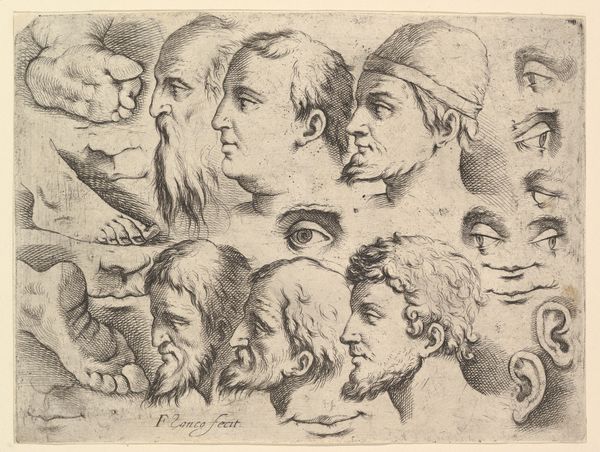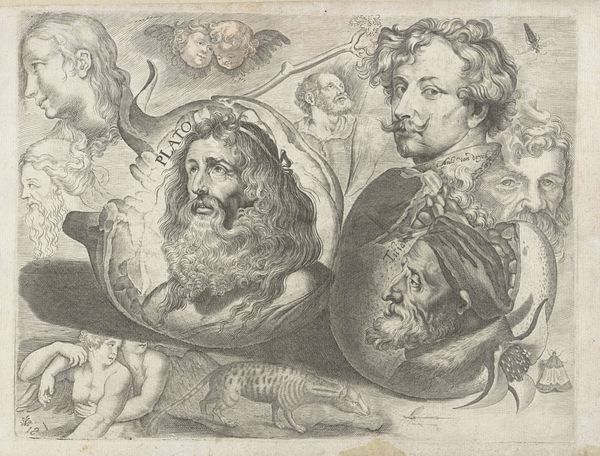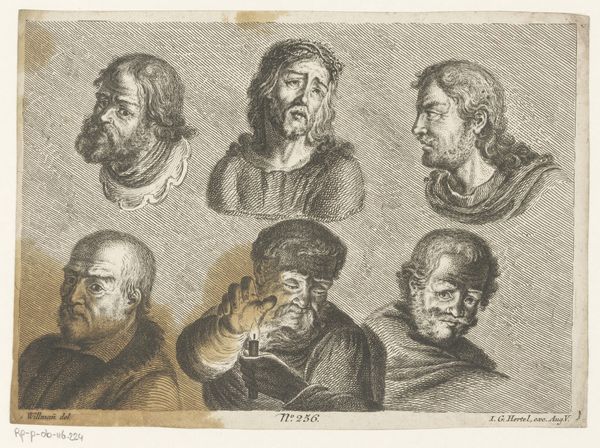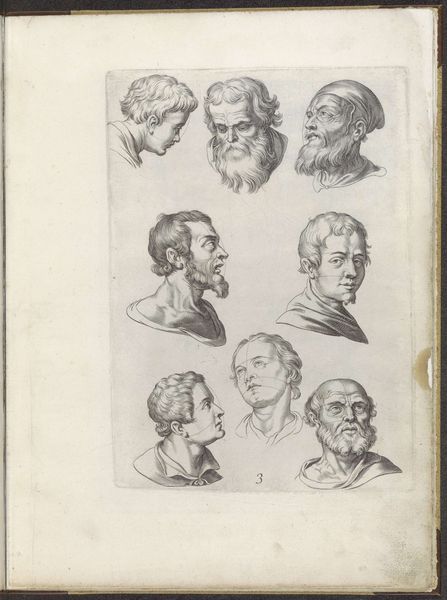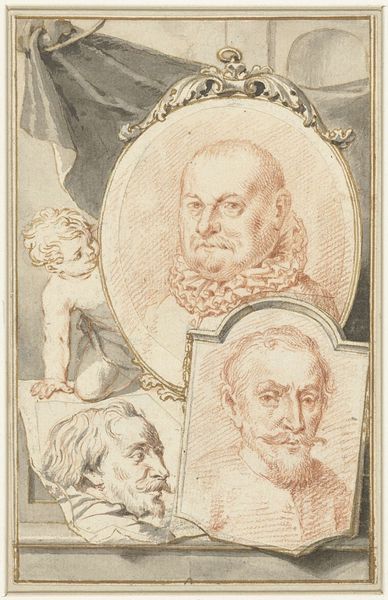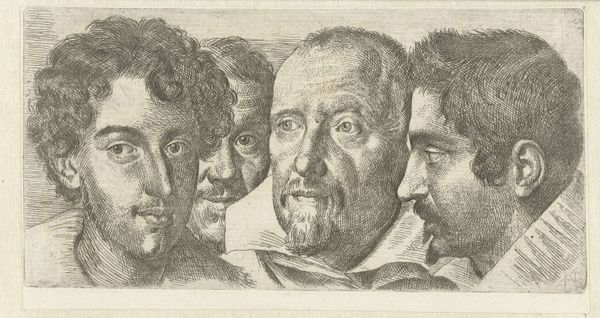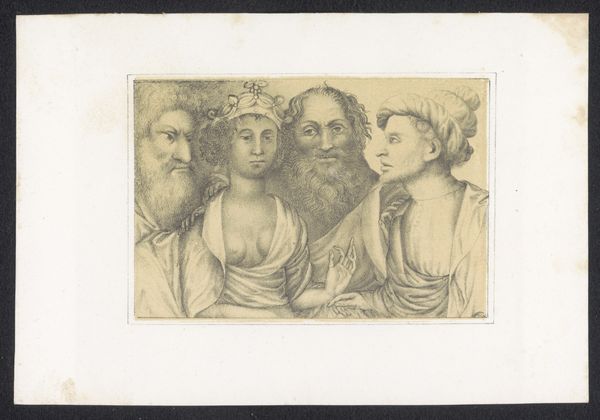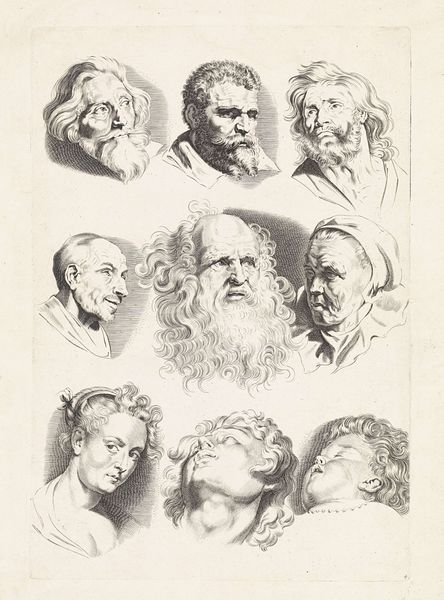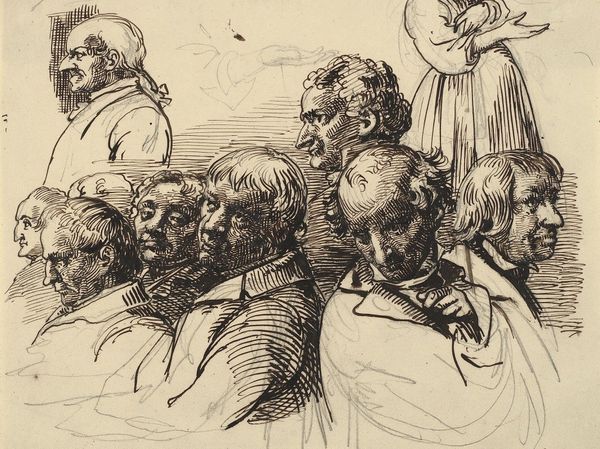
Studieblad met tekenvoorbeelden: centaur, staande figuur en koppen 1610 - 1672
0:00
0:00
drawing, print, paper, ink
#
portrait
#
drawing
#
imaginative character sketch
#
toned paper
#
light pencil work
#
baroque
# print
#
pencil sketch
#
sketch book
#
figuration
#
paper
#
personal sketchbook
#
ink
#
sketchbook drawing
#
pencil work
#
genre-painting
#
storyboard and sketchbook work
#
sketchbook art
Dimensions: height 165 mm, width 230 mm
Copyright: Rijks Museum: Open Domain
Curator: Welcome. We are looking at “Studieblad met tekenvoorbeelden: centaur, staande figuur en koppen,” a drawing done sometime between 1610 and 1672 by Michael Snijders. Editor: What strikes me is the variety of textures he’s captured with what looks like fairly simple pen and ink work. The hair, especially—it's very evocative. Curator: This piece functions as a study sheet; Snijders is showcasing his ability to capture a range of human expression and idealized forms like the centaur, rooted in classical mythology. Editor: It’s interesting to consider how these study sheets would have been used in workshops. These weren't mass-produced prints, right? This must have been preparatory for painting, maybe as models for apprentices. What kind of paper and ink did Snijders utilize, and how might that affect its survival? Curator: Certainly. These sheets provided examples for artists learning their trade and established conventions in representing different subjects. We must think about the relationship between artists, their studios, and the artistic institutions. Editor: You can almost see the hand guiding the pen. Look at the precision around the eyes compared to the looser, quicker strokes defining the folds of fabric. The materials themselves dictate so much about the aesthetic and how the artist engages with his medium. What social forces would value such draughtsmanship at the time? Curator: The ruling class, for example, desired artists who could masterfully represent them and their ideals. Disseminating these kinds of images served the interests of power structures. This study sheet reflects Baroque interests in movement and emotion as they are captured in single expressions and character types. Editor: Absolutely, it provides a lens into the artist's labor and choices made when manipulating the raw materials at their disposal, within the historical constraints of artistic practice. And this allows him access into circles that value and promote the fine skill and time these sketches exemplify. Curator: A fantastic look into the intersection between training and power dynamics of the time! Editor: It underscores how artists utilized their skills in their unique historical contexts.
Comments
No comments
Be the first to comment and join the conversation on the ultimate creative platform.
